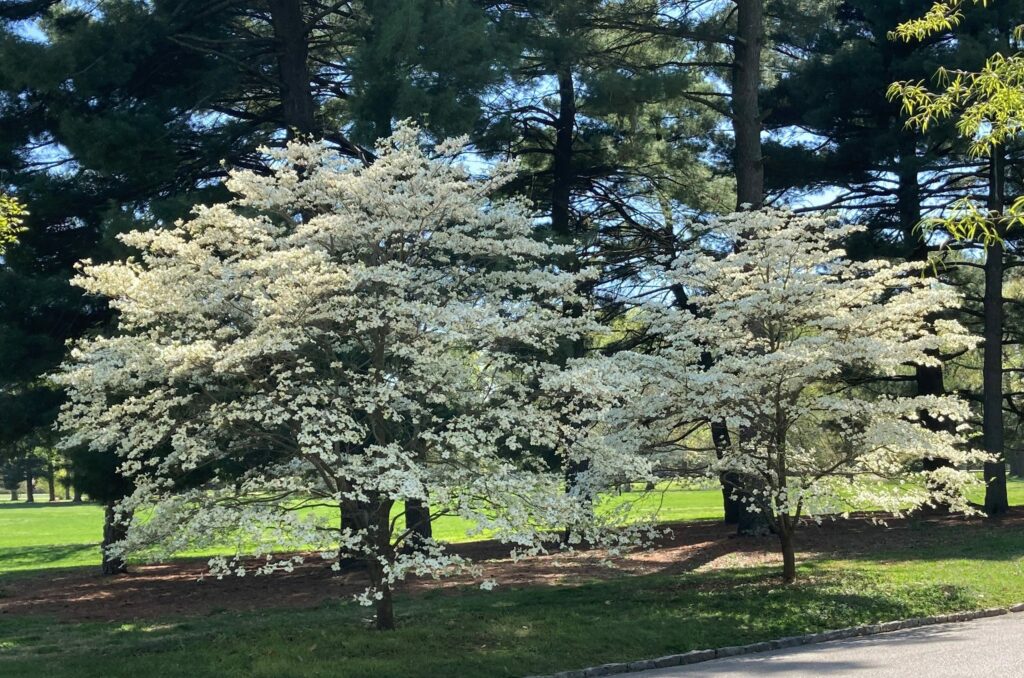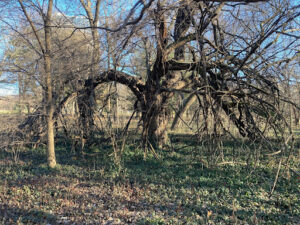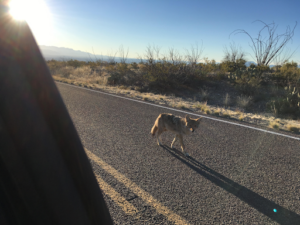Legendary plantsman Michael Dirr calls Cornus florida, the flowering dogwood, “the aristocrat of native flowering trees”, and who could disagree? The white flowers (pink on some cultivars) are not actually flowers, but bracts, modified leaves – the yellowish clusters in the center are the true flowers. The result of this botanical quirk is a “flower” that is unusually stiff, flat and open, which sets it apart from the panoply of other white spring flowers. When sunlight filters through the leafless spring forest and strikes the bracts in the understory, it gives them a translucent glow that can catch the eye from considerable distance. While our state is graced by all sorts of beautiful spring flowers, there’s really nothing quite like the pure white bracts of the flowering dogwood. As if this isn’t enough, it also has a deep burgundy fall color that arrives early and lingers long, perhaps best in show for our smaller ornamentals.
So of course we all want to bring this sylvan magic into our yards. We want it to grace the entrances to our buildings, to line our roadways, and to reside in all sorts of places that are completely unnatural to a denizen of the cool woodland understory. Sometimes the dogwood obliges, but more often the result is semi-tragic. Those fine white bracts, as crisp and noble as a well-starched dress shirt when healthy, get scorched at the edges and have sickly pallor. The leaves become blotched with leaf spots, anthracnose or powdery mildew,, or simply fry in the heat. The tree barely gets a chance to spread its wide, low branches (which can span 30 feet) and dies an ignoble death after a few years. Do not make our state tree suffer such dishonor! Planting a flowering dogwood in full sun, in poor soil, without a generous mulch ring, should be considered an act of aggression against Missouri.
In the wild, this tree will tolerate dry and rocky soil, but if you want to introduce one to your landscape you’ll want organically rich, acidic soil. Frustratingly, flowering dogwood is intolerant of both drought and overwatering (which will also encourage the diseases mentioned above), so good drainage is of utmost importance, as is that generous mulch ring. Make it 2-4” deep and as wide as the branches spread. Don’t remove the lower branches or let the grass encroach on its roots. In fact, prune it as sparingly as possible. It is best in part shade, ideally afternoon shade and morning sun. More sun = more flowers, but also more problems. Don’t be greedy. You’ve dragged this species kicking and screaming from its cool forest home. Try to make it feel welcome and appreciated in your yard.
Cornus florida can live up to 80 years, and reach 30-40 feet in height and spread when cultural conditions are right. When heartwood forms it is the hardest, densest wood that occurs naturally in our forests, much more so than white oak or hickory, rivaled only by Osage orange which is not truly native (the Latin name cornus means “horn”, a reference to the wood’s hardness). Plant it where it wants to live and it will give your yard an unrivaled prestige.




